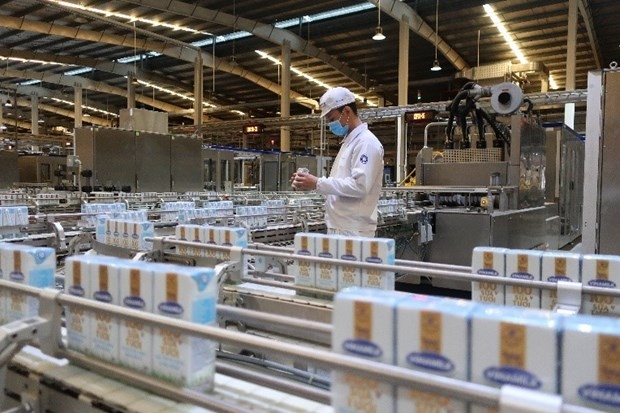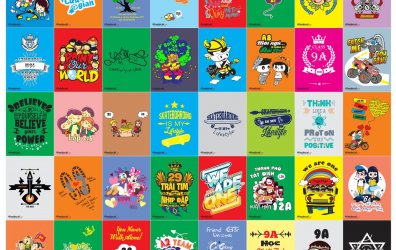P
phuonglien
The food and beverage industry is incredibly scaled with moving trends. One of them is the trend of consumer tastes and needs, while the other related to the food processing process has to overcome its own standards and challenges. In each different stage, the trend is also different.In the following article, LKS 360 Exim will share with customers the top 4 trends for the leading food and beverage industry in the dialogue.
4 Trends for the food and beverage industry in 2022 today
Sustainability
Two of the factors in environmental sustainability are the use of electricity and water. While there are differences between the treatment in agri-food production and industrial food production, the benefits of sustainable practices are similar. Optimizing a food production facility so that it uses less water and less fuel, not only benefits the environment, but also saves costs for the producer.

Automation
In some surveys, 22% of respondents said that they have installed advanced automation systems. This makes sense and will continue to be the trend for years to come. Automation is one of the solutions that both reduce labor and labor costs and instead increase labor productivity, limiting all risks.
On the other hand, automation applications for businesses and factories not only bring high quality products, but also improve the scale of operations and optimize production processes. This is a stepping stone for enterprises to easily access and expand production scale at home and abroad.

Food safety
Food safety is also a concern, and there are always ways to align current regulations and best practices. The regulations on food hygiene and safety such as: HACCP, ISO ... all emphasize on the prevention and control of all risks of foodborne illness affecting consumers' health.
To prevent and prevent any possible unfortunate risks, food manufacturers should focus on standards of hygiene, food protection, inspection and compliance, and preventive controls. Search and invest in temperature control equipment, insects as well as hidden risks that can affect the production process, especially the quality of goods.
State regulations change
In parallel with food safety issues, state regulations for food production and the food and beverage industry in general are constantly evolving. This includes cleanliness of facilities, temperature control and pest control. The regulations of the local state of the host country, the factories that are producing also need to be followed and updated.4 Trends for the food and beverage industry
Food production and the food and beverage industry, in general, are constantly changing. Advances in automation, food safety regulations and sustainability are rapidly evolving trends. One way or another, these trends will persist for years to come, and it's important that your food facility stays up-to-date with trends so your operations can stay ahead of the curve.
LKS 360 IMPORT EXPORT TRADING COMPANY LIMITED
4 Trends for the food and beverage industry in 2022 today
Sustainability
Two of the factors in environmental sustainability are the use of electricity and water. While there are differences between the treatment in agri-food production and industrial food production, the benefits of sustainable practices are similar. Optimizing a food production facility so that it uses less water and less fuel, not only benefits the environment, but also saves costs for the producer.

Automation
In some surveys, 22% of respondents said that they have installed advanced automation systems. This makes sense and will continue to be the trend for years to come. Automation is one of the solutions that both reduce labor and labor costs and instead increase labor productivity, limiting all risks.
On the other hand, automation applications for businesses and factories not only bring high quality products, but also improve the scale of operations and optimize production processes. This is a stepping stone for enterprises to easily access and expand production scale at home and abroad.

Food safety
Food safety is also a concern, and there are always ways to align current regulations and best practices. The regulations on food hygiene and safety such as: HACCP, ISO ... all emphasize on the prevention and control of all risks of foodborne illness affecting consumers' health.
To prevent and prevent any possible unfortunate risks, food manufacturers should focus on standards of hygiene, food protection, inspection and compliance, and preventive controls. Search and invest in temperature control equipment, insects as well as hidden risks that can affect the production process, especially the quality of goods.
State regulations change
In parallel with food safety issues, state regulations for food production and the food and beverage industry in general are constantly evolving. This includes cleanliness of facilities, temperature control and pest control. The regulations of the local state of the host country, the factories that are producing also need to be followed and updated.4 Trends for the food and beverage industry
Food production and the food and beverage industry, in general, are constantly changing. Advances in automation, food safety regulations and sustainability are rapidly evolving trends. One way or another, these trends will persist for years to come, and it's important that your food facility stays up-to-date with trends so your operations can stay ahead of the curve.
LKS 360 IMPORT EXPORT TRADING COMPANY LIMITED
- Email: lks360sellercenter@gmail.com
- Hotline: 02866.503.603
- Website: https://lks360exim.com




